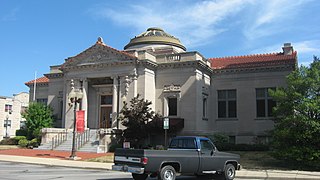 W
WThe Anderson Center for the Arts is located in downtown Anderson, Indiana at 32 West 10th Street in the former Carnegie Library building built partly in honor of educator and railroad executive John Byers Anderson. The building, as Carnegie Public Library, is listed in the National Register of Historic Places.
 W
WThe Ballard Carnegie Library is a historic Carnegie library in the Ballard neighborhood of Seattle, Washington, United States. The institution was preceded by a freeholders' library in the 1860s, which was eventually replaced in 1901 by a reading room organized and funded by a women's group. Various funds including a $15,000 grant were used to create a new library for Ballard, then an independent city. The library opened to the public on June 24, 1904. It was the first major branch of the Seattle public library system after Ballard was annexed by Seattle in 1907, and also employed one of the first African American librarians in Seattle.
 W
WThe Baxter Building is an historic building located at 619 Congress Street in downtown Portland, Maine. Completed in 1888, it served as the Portland Public Library from its founding until 1978, when the Library moved to another location on Congress Street. The building went unused from 1978 to 1983, when it was purchased by the Maine College of Art (MECA). MECA utilized the space for studio space, dark rooms, as a computer lab and library. In 2010, MECA sold the building to Northland Enterprises LLC, which then leased it to the VIA Group.
 W
WThe Boston Library Society was an American subscription library established in New England's pre-eminent city, Boston, during 1792. Early subscribers included Revolutionary War figures Paul Revere and William Tudor. The society existed until 1939 when it merged into a larger historical library known as the Boston Athenæum.
 W
WThe historic Brainerd Public Library is a Carnegie library built in 1904. The building is located at 206 7th Street North in Brainerd, Minnesota, United States, and is in the Classical Revival architectural style using granite and brick. The façade of the building features a portico with four columns holding up a pedimented gable. Although the building was originally a library, it later was used briefly as an antiques store, and is currently a law office.
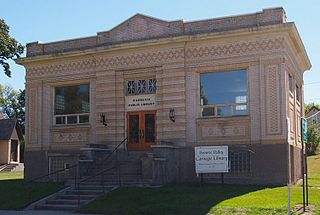 W
WThe Browns Valley Carnegie Library is a Carnegie library building in Browns Valley, Minnesota, United States, completed in 1916. It was listed on the National Register of Historic Places in 1985 as the Browns Valley Carnegie Public Library for having local significance in the themes of architecture and education. It was nominated for being the town's most architecturally significant early-20th-century building and an example of the libraries provided to small Minnesota communities by Andrew Carnegie's philanthropy.
 W
WCambria Public Library Building, also known as Carnegie Public Library, is a historic library building located at Johnstown, Cambria County, Pennsylvania. It was built in 1890-1891, with funds provided by the philanthropist Andrew Carnegie. It is one of 3,000 such libraries constructed between 1885 and 1919. Carnegie provided all funds toward the construction and maintenance of the library through 1930. It is a three-story brick building with a tile roof encased in dormers in the French Gothic revival style. It was damaged in the Johnstown Flood of 1936 and ceased to function as a library in 1971. The building houses the Johnstown Flood Museum.
 W
WThe Carnegie Art Museum is a public art museum owned by the City of Oxnard, California in the building originally occupied by the Oxnard Public Library. The Neo-Classical building, located adjacent to Oxnard's Plaza Park, opened in 1907 as the Oxnard Public Library and was converted into an art museum in 1986. In July 1971, it became the first building in Ventura County and the first Carnegie library in California to be listed on the National Register of Historic Places.
 W
WThe Carnegie Arts Center of Leavenworth, Kansas an historic building in namesake city. It was originally the Leavenworth Public Library. Constructed in 1900 with funds donated by Andrew Carnegie, the two-story brick and limestone building was the first Carnegie Library in Kansas. The architect was Marshall R. Sanguinet of Fort Worth, Texas, who designed the Dallas Public Library at the same time. It is listed on the State and National Registers of Historic Places.
 W
WThe Carnegie Center for Art & History, within the Downtown Historic District of New Albany, Indiana, is a contemporary art gallery and local history museum. The building was initially built as a Carnegie Library, first opened on March 2, 1904, with 11,125 total books. It is of Beaux-Arts architecture style. It was used as a library until 1969, when the new New Albany-Floyd County Public Library was built. After a $1.2 million renovation in 1998, the name was changed to the Carnegie Center for Art & History to better reflect its mission and library heritage. In 2015, total attendance was 26,690 and Carnegie Center staff presented 107 programs to participants of all ages. The Carnegie Center has a full-time staff of four employees, which includes a Director, Curator, Coordinator of Public Programming and Outreach and First Impression Receptionist and a part-time maintenance person. Three part-time trained volunteers come in weekly to manage a collection of over 5,000 objects. All exhibits and programs are offered free of charge to the public.
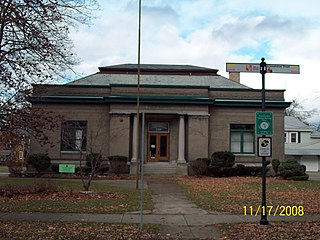 W
WThe Carnegie Library in North Tonawanda, New York is a historic Carnegie library building designed and built in 1903 with funds provided by the philanthropist Andrew Carnegie. It is in Niagara County, New York and one of 3,000 Carnegie libraries constructed between 1885 and 1919, including 107 in New York State.
 W
WCattermole Memorial Library is a historic building located in Fort Madison, Iowa, United States. It was individually listed on the National Register of Historic Places in 1984. In 2007 it was included as a contributing property in the Fort Madison Downtown Commercial Historic District.
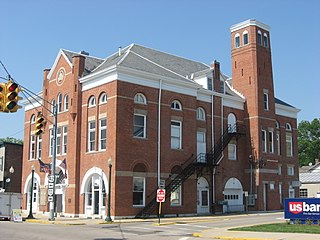 W
WThe Cedarville Opera House is a historic theater in the village of Cedarville, Ohio, United States. Erected in 1888 on Main Street in downtown Cedarville, it has been a premier part of community life since its construction.
 W
WThe Chicago Cultural Center, opened in 1897, is a Chicago Landmark building operated by Chicago's Department of Cultural Affairs and Special Events that houses the city's official reception venue where the Mayor of Chicago has welcomed Presidents and royalty, diplomats and community leaders. It is located in the Loop, across Michigan Avenue from Millennium Park. Originally the central library building, it was converted in 1977 to an arts and culture center at the instigation of Commissioner of Cultural Affairs Lois Weisberg. The city's central library is now housed across the Loop in the spacious, postmodern Harold Washington Library Center opened in 1991.
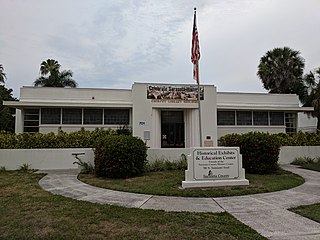 W
WThe Chidsey Library or Chidsey Building is a historic building located in Sarasota, Florida at 701 North Tamiami Trail. The building was home to the city's first public library from 1941 to 1976.
 W
WThe Koch Family Children's Museum of Evansville is an interactive children's museum in Evansville, Indiana. The museum educates and inspires children about the world. Exhibits include deconstructing objects, a water exhibit that spans multiple floors, experiences about the human body and its senses, and a gallery for freedom of expression.
 W
WCircleville Memorial Hall is a historic community center and war memorial in the city of Circleville, Ohio, United States. Built in the years after the Civil War to remember the victims of the war, it has been named a historic site.
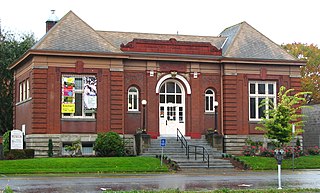 W
WThe Clark County Historical Museum, Vancouver, Washington, is located in a 1909 Carnegie library and is operated by the Clark County Historical Society, established in 1917. The museum features rotating exhibits of local interest including a semi-permanent Native American craft exhibit. The Society is dedicated to the collection, preservation, and interpretation of the cultural history of Clark County and the Pacific Northwest, and to sponsoring educational programs and exhibits for the enrichment of all members of the public.
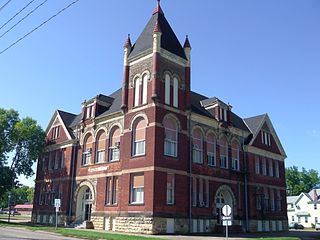 W
WClinton High School and Public Library, also known as Roosevelt School, is an historic structure located in Clinton, Iowa, United States. It was listed on the National Register of Historic Places in 2012.
 W
WThe Crompton Free Library is a historic library building at 1679 Main Street in West Warwick, Rhode Island. The small single-story wood frame building was constructed in 1876, with funding from local mill owners. It is an excellent local example of a small Stick style public structure.
 W
WThe Deschutes Public Library administrative building, located at 507 N.W. Wall Street in Bend, Oregon, is listed on the National Register of Historic Places. The architect was Whitehouse & Church of Portland.
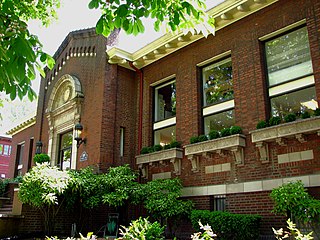 W
WThe East Portland Branch, Public Library of Multnomah County housed part of the library system of Multnomah County, Oregon, from 1911 to 1967. Designed by architect A. E. Doyle, the structure was completed in 1911 in Portland at 1110 Southeast Alder Street in the city's central eastside. Funded in part by the Carnegie Foundation, the original building consisted of one floor and a daylight basement and included reading rooms for children and adults. The building had a red brick exterior, terra-cotta trim, and a roof of green Spanish tiles. Remodeled in 1956 and remodeled again prior to its sale in 1967, the one-story building, which had rooms 18 feet (5.5 m) high, became a two-story office building.
 W
WThe Carnegie Library is a historic building on the Fisk University campus in Nashville, Tennessee. The cornerstone was laid in 1908 by William Howard Taft, who was then the U.S. Secretary of War. It was funded by Andrew Carnegie, who provided a number of academic libraries, as well as many public Carnegie libraries.
 W
WThe Gresham Carnegie Library, is a historic building in Gresham, Oregon. The Tudor style building was built in 1913 and was added to the National Register of Historic Places in January 2000. It served as a public library in the Multnomah County Library system from 1913 until December 1989 when the Gresham Library opened.
 W
WThe Hanford Carnegie Library, now the Hanford Carnegie Museum, is a museum in Hanford, Kings County, central California.
 W
WThe Historical Society of Washington, D.C. is an educational foundation and museum dedicated to preserving and displaying the history of Washington, D.C. The society provides lectures, exhibits, classes, community events, and other educational programs as part of its mission. In addition, the society's Kiplinger Research Library houses a collection of books, maps, photographs, and other materials relevant to the history of the city.
 W
WThe Howland Cultural Center, formerly known as Howland Library, is located on Main Street in Beacon, New York, United States. It is an ornate brick building designed by Richard Morris Hunt in the 1870s. In 1973 it was listed on the National Register of Historic Places.
 W
WThe George and John R. Hunt Memorial Building, often referred to as just the Hunt Memorial Building, is the former Ellenville, New York, United States, public library. It is located on Liberty Square, at the juncture of Liberty Place and Canal Street, just across from the village's post office, another Registered Historic Place in Wawarsing.
 W
WThe Jamestown Opera House is a historic government building and community center in the village of Jamestown, Ohio, United States. It has been named a historic site because of its well-preserved architecture. Besides serving as a theater, the opera house has functioned as the community's village hall, its fire station, its post office, and its library.
 W
WThe Jim Gatchell Memorial Museum is an American West museum in Buffalo, Wyoming, housed in a 1909 Carnegie Library building.
 W
WThe Kenton Public Library is a historic building in downtown Kenton, Ohio, United States. One of 109 Carnegie libraries in Ohio, it was designed in 1905 by the architectural firm of Richards, McCarty and Bulford; Carnegie donated $20,000 to aid in its construction. An attempt to start a library in Kenton began in 1853, but over thirty years passed before one was actually begun. From 1886 to the opening of the Carnegie library, the library was housed in a business block on the city's central square. The library building is a one-and-one-half-story brick structure. An elevated foundation supports the rectangular structure, which is accessed from the street by a staircase.
 W
WThe Lincoln Branch Library is a former Carnegie library building in the Lincoln Park neighborhood of Duluth, Minnesota, United States. It was constructed from 1915 to 1917 as the first permanent home of a Duluth Public Library branch first established in 1892. The Lincoln Branch Library was built of brick and limestone in the Late Gothic Revival style. It was the last of the three Carnegie libraries built in Duluth.
 W
WLiterary Hall is a mid-19th-century brick library, building and museum located in Romney, a city in the U.S. state of West Virginia. It is located at the intersection of North High Street and West Main Street. Literary Hall was constructed between 1869 and 1870 by the Romney Literary Society.
 W
WThe Low Memorial Library is located on the Columbia University campus in Morningside Heights, Manhattan, New York City. It was built in 1895 by University President Seth Low as the University's central library. Financed with $1 million of Low's own money due to a lack of funds from alumni, he named it in memory of his father, Abiel Abbot Low. It has housed the central administrative offices of the university following the completion of the Butler Library in 1934, and is the focal point and most prominent building on the university's Morningside Heights campus.
 W
WThe Main Library also known as the Erie Public Library combines elements of the Beaux Arts Classicism and Second Renaissance Revival styles of architecture. Both were commonly used at the end of the nineteenth century to convey the importance of public buildings. The building features arched openings, a prominent cornice, swag and garland decorations, and a roofline balustrade. It is clad in Pompeian red brick. The original facade is dominated by a marble portico, which was removed and stored by previous owners. It was reassembled and conserved as part of the renovation, recapturing the library's original grandeur. The library rotunda is one of the most significant interior spaces in Erie and was meticulously restored as part of the renovation. Mahogany paneling and marble floors serve as a backdrop for a decorative paint scheme. Spectacular allegorical murals on each side of the coffered skylight refer to literature, art, science, and poetry. They were completed by Elmer Ellsworth Garnsey, who also completed murals in the New York Stock Exchange and the Library of Congress.
 W
WThe Marion Public Library building, now part of the Trinity Baptist Church, is a historic Carnegie library in Marion, Ohio. Funded with a Carnegie Grant in 1905, the public library opened in 1907. The library was designed by Richards, McCarty & Bulford of Columbus, Ohio. The architectural firm also designed the Frank Huber Residence, located at 416 Church Street and the Huber Building, a five-story department store in Marion.
 W
WThe Medford Carnegie Library is a two-story library building located in Medford, Oregon, United States. The building was erected in 1911 as a gift from Andrew Carnegie. The Carnegie Library building was vacated in 2004 when all services were moved to a new library building in downtown Medford.
 W
WMeridian Museum of Art is an art museum located at 628 25th Avenue, Meridian, Mississippi. The building was added to the National Register of Historic Places in 1979 and declared a Mississippi Landmark in 1985. The building originally served as the home of the First Presbyterian Church of Meridian until the city of Meridian bought the building in 1911 and turned it into a Carnegie Library in 1913. The city originally constructed two Carnegie libraries — one for whites and one for African-Americans; the building currently housing the Meridian Museum of Art served as the white library. In 1970, after the libraries integrated and moved to a new location, the vacant building at 628 25th Avenue was transformed into the Meridian Museum of Art and still operates today.
 W
WThe Minneapolis Public Library, North Branch building is a former library in Minneapolis, Minnesota, United States. It was designed in 1893 by architect Frederick Corser. When it was opened, it was claimed to be the nation's first branch library to have open shelves so patrons could browse for books on their own, without asking librarians to retrieve them. The library set a precedent for future library development in the Minneapolis Public Library system.
 W
WThe Newton Centre Branch Library is a historic library building at 1294 Centre Street in Newton, Massachusetts. The building now houses municipal offices. The 1 1/2 story brick building was designed by Newton resident James Ritchie of Ritchie, Parsons & Tyler, and was built in 1928. It was one of five branch libraries paid for by subscription of Newton citizens and built between 1926 and 1939. The building is basically Tudor Revival in its styling, although its entry has a Colonial Revival segmented arch surround.
 W
WThe Oregon Civic Justice Center is a three-story former library building on the campus of Willamette University in downtown Salem, Oregon, United States. Built in 1912 as a Carnegie library for the city of Salem, the building now houses several programs of Willamette University College of Law. Prior to the law school's moving into the facility in 2008, the building was used by the adjacent Young Women's Christian Association (YWCA) from 1971 to 2006.
 W
WThe Paintsville Public Library Building is a historic building located at 305 Second Street in Paintsville, Kentucky. It was constructed by the WPA in 1934. The library closed in the 1940s and was replaced by the Johnson County Public Library on February 3, 1947, which utilized the building until the 1960s. It was added to the National Register of Historic Places on January 26, 1989. It now serves as the board of education for the Paintsville Independent School District.
 W
WThe Pendleton Center for the Arts is an arts center located in the historic former Umatilla County Library building, also known as Pendleton Public Library in Pendleton, Oregon, United States.
 W
WThe Rensselaer Carnegie Library in Rensselaer, Indiana is a building from 1905. It was listed on the National Register of Historic Places in 1994. The building no longer functions as a library; since 1992 it houses the Prairie Arts Council, a local performing arts organization.
 W
WThe Robbinsdale Library was a community library in Robbinsdale, Minnesota built in 1925 through the efforts of the Robbinsdale Library Club. The building was listed on the National Register of Historic Places in 1978.
 W
WThe Santa Cruz Museum of Natural History, also known affectionately by locals as "the Whale Museum", is one of the earliest museums in the state of California. Founded from the Laura Hecox collection in 1905, the Museum's collections grew extensively throughout the years, acquiring many Native American and archaeological artifacts, as well as natural history specimens. Currently, the Museum is housed in a Carnegie Library, named after the Carnegie philanthropic foundation that funded the construction of the library in 1915.
 W
WThe Sioux City Free Public Library is a historic building located in Sioux City, Iowa, United States. The library was located in a section of the Municipal Building, no longer extant, between 1892 and 1913. It had outgrown the space when the Library Board contacted Andrew Carnegie in 1910 about providing the funding for a new library building. Their request was initially turned down. They chose to work with New York City architect Edward L. Tilton, an architect preferred by Carnegie, in place of local architect William L. Steele who was working with the board previously. Local resident George Murphy donated the property for the new building. Meanwhile, Tilton designed the two-story brick Renaissance Revival building. On April 8, 1911, Carnegie approved the project and donated $75,000 for the building's construction. The new building was dedicated on March 6, 1913, and it is considered "an excellent early twentieth century example of the architectural development of library planning and design." It was Tilton's only building in Iowa.
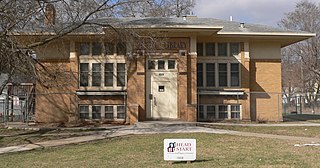 W
WThe Sioux City Public Library is a historic building located in Sioux City, Iowa, United States. Local architect William L. Steele designed the Prairie School-style building, which was completed in 1927. This was long after the style was no longer fashionable in its native Chicago, but it shows its staying power in other areas of the Midwest. The building is identical to the former Fairmount Branch, which was built the same year. The Smith Villa Branch was listed on the National Register of Historic Places in 1983. The building now houses a Head Start program.
 W
WThe Sioux City Public Library-North Side Branch, also known as Bruce Meyer Productions, is a historic building located in Sioux City, Iowa, United States. The city received a total of $85,000 in 1911 from Andrew Carnegie to build the main library and the Leeds branch library. It was the only city in Iowa to receive a grant for both a main and branch library. A $100,000 bond issue passed in 1926 to replace the temporary facilities for the other branch libraries throughout the city. The North Side Branch was designed by local architect William L. Steele in the Tudor Revival style, and was completed in 1929. It was used as a branch facility until 1982 when the city closed all of the branch libraries in 1982, except the Morningside branch. A new branch library was created on the north side. The old north branch was sold to Bruce Meyer for his photography studio. It was listed on the National Register of Historic Places in 2000.
 W
WThe Stewart Building, formerly home to Stewart Library and current home to the Grinnell Area Arts Council, is a historic building located in Grinnell, Iowa, United States. Joel Stewart was a farmer, banker, and state legislator who was known for his philanthropic activities. Included in these activities was the organization and construction of a public library for Grinnell. He planned for the structure, superintended the construction, and turned it over to the city free and clear. The library was dedicated on May 9, 1902. The three-story, brick building follows the Romanesque Revival style, and contains 5,458.8 square feet (510 m2) of space. It served the community as the public library from the time it opened until November, 2009, when the library moved to the new Drake Community Library located at 930 Park Street. In 2009 the Grinnell Area Arts Council entered into an agreement with the city to rent the building once the new library building was completed. They took ownership of the building in July 2013 with the understanding that they would make the necessary infrastructure improvements. The meeting room on the top floor was converted into the Loft Theatre, and it opened in August 2014. It was listed on the National Register of Historic Places in 1976.
 W
WThe Dalles Carnegie Library is a historic former library building located in The Dalles, Oregon, United States. It is one of the thousands of libraries whose construction was funded by Andrew Carnegie. The construction grant of $10,000 was approved in March 1907, and it was dedicated in September 1910.
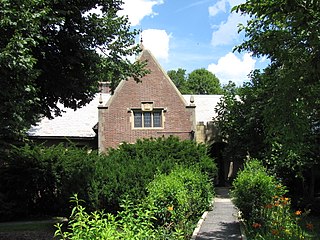 W
WThe Waban Library Center is a library located in a historic building at 1608 Beacon Street in Newton, Massachusetts. The building is a modest 1½ story Tudor Revival brick building, with a gabled slate roof and raised end walls. A cross-gabled entry area projects from the center of the front facade. It was designed by Densmore, LeClear & Robbins, and built in 1929 with funds raised by subscription from Newton's citizens. The building was listed on the National Register of Historic Places in 1990.
 W
WWright Memorial Library, more commonly known as the "Wright Building," is a historic library at 147 St. George Street in Duxbury, Massachusetts.
 W
WThe Yreka Carnegie Library is a building located in Yreka, California, in the United States. Formerly used as a library building, it now houses the Yreka Police Department. The one-story building, designed by W. H. Weeks and completed in 1915, exhibits Classical Revival architecture. It was added to the National Register of Historic Places in 1992.